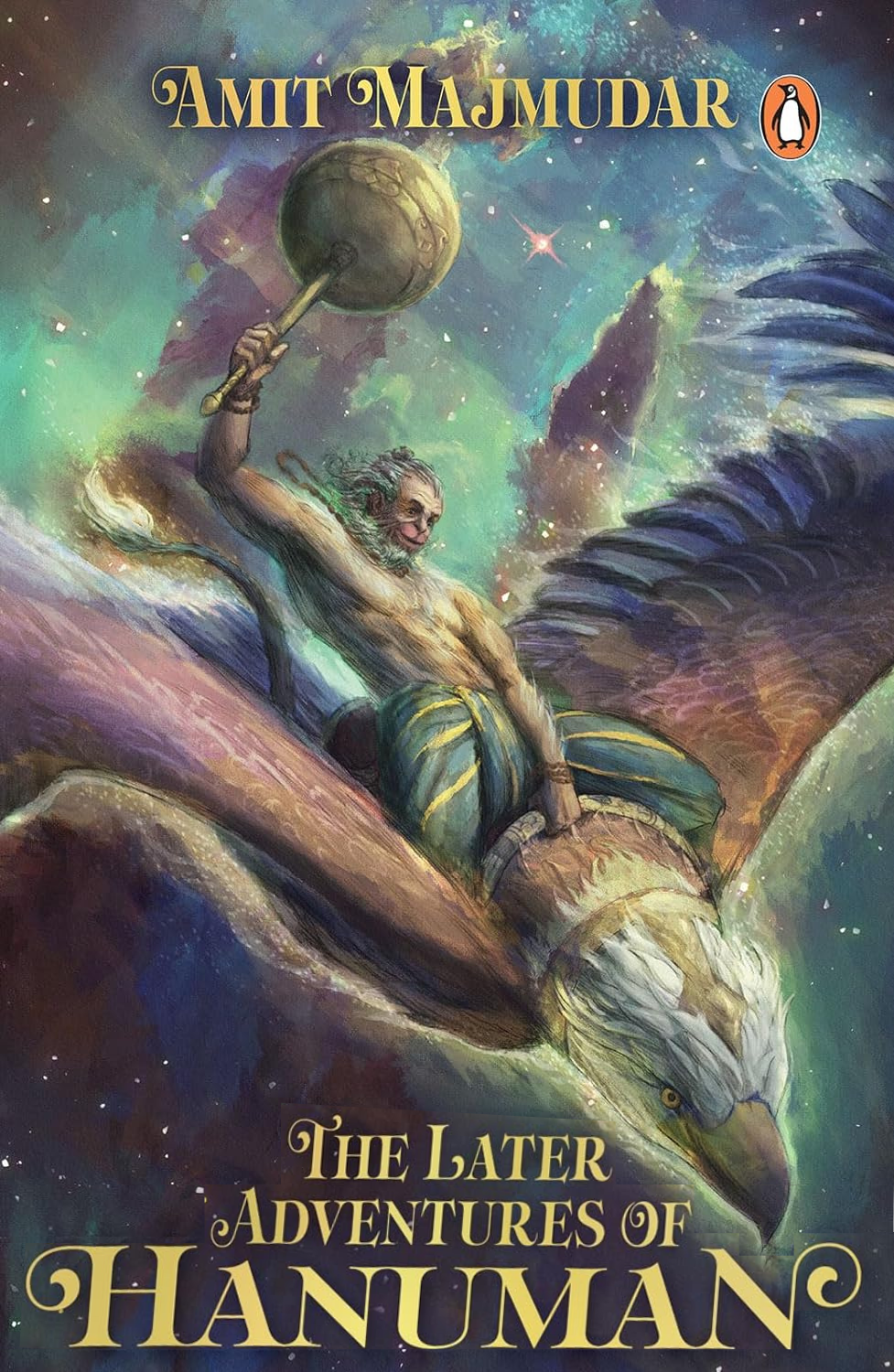Blurb:
The day Hanuman watched his beloved Rama walk into the river Sarayu―at the end of an 11,000-year reign―was one of the most heartbreaking days of his life. Having been granted the boon of immortality, Hanuman is blessed to live on Earth as long as the Ramayana is told and remembered. And so, to heal his grief, he begins to travel all over the world and has many adventures, thrilling and unexpected, ensuring that the Ramayana is never forgotten.
In this collection of forty exciting tales, read how Hanuman, the monkey-god, vanquishes the thousand-headed Ahiravana, defeats a giant wasp-demoness, races with Garuda to see who is the fastest and has many other escapades.
Action-packed and fast-paced, these reimagined stories of chiranjeevi Hanuman’s later adventures are magical, heart-warming and bittersweet. Continuing the traditional folk practice of inventing adventures for Hanuman, Amit Majmudar takes us along on the monkey-god’s long and lonely, and rollickingly eventful, immortality.
My Review:
In “The Later Adventures of Hanuman” by Amit Majmudar, readers are treated to a collection of 40 freely imagined stories depicting the adventures of Hanuman after Rama and his brothers have left for the heavenly abode. Hanuman traveling the world to ensure the Ramayana is never forgotten is quite entertaining, offering a unique perspective on the beloved mythological character’s post-Ramayana life.
The author introduces readers to a variety of captivating characters, including gods, demons, monkeys, and other animals, throughout the tales, which add depth and excitement to Hanuman’s adventures. The imaginative interplanetary travels add an additional layer of excitement to the narrative, showcasing the author’s creativity and skill in world-building. The stories are action-packed and fast-paced (3-7 pages long each), keeping readers engaged from beginning to end.
The stories I loved the most were – “The Kite of the Capuchin Monkeys”, “Garuda’s Challenge”, and “Arjuna versus Rama”. They are creative and bring out valuable lessons about friendship and devotion.
I definitely loved the narration and the creativity of the stories, but I believe that knowing the character of Hanuman since as long as I can remember, a few stories didn’t do justice to Him. Certain tales, like “Split-the-Fly”, “The False Lighthouse”, and “The Revolt of the Coconut Gatherers”, promote violence without sufficient justification, detracting from Hanuman’s character as a wise and compassionate deity.
Additionally, instances where Hanuman’s actions lead to negative consequences for others, such as Hanuman leading one female monkey to commit suicide – “The Pomegranate Tree” and leaving the other mourning – “First Love” just so he could avoid the confrontation of rejecting their proposals, may leave readers questioning the portrayal of the beloved mythological figure.
Kaliyug has been shown in a bad light, which can’t be denied. And, the book doesn’t leave the reader hopeful of a better future. The book shows how Hanuman understands the world is a bad place, and he or others can’t do much about it — It is what it is.
Overall, “The Later Adventures of Hanuman” offers an entertaining and imaginative take on Hanuman’s adventures in the Kaliyug. While some aspects of the narrative may fall short of fully capturing Hanuman’s character, the book remains a worthwhile read for fans of mythology and adventure alike.

